There is a reason why the woolly bugger is chosen by a vast number of anglers in "one fly" competitions around the world: they work. And they don't just work, they work almost everywhere. Perhaps chief amongst the reasons why woolly buggers are so effective is the leech, which woolly buggers imitate so well. Leeches are found in virtually all manner of freshwater, whether it be a stagnant farm pond, a big, windswept lake, a slow moving spring creek or a tumbling freestone stream. Because leeches are commonly found in freshwater, they are avidly eaten by trout and many other fish and plying the water with flies that imitate leeches — which includes not only woolly buggers but, of course, leech-specific flies and other patterns — can be pathways to success even on unfamiliar waters.
In his book, The Orvis Streamside Guide to Trout Foods and Their Imitations, Tom Rosenbauer relates an anecdote about Blue Ribbon Flies' Craig Matthews regarding the importance of leeches. Tom writes that, "to anyone who doubts the importance of leeches, Matthews has them observe while he throws a leech into the water in front of a cruising trout. The fish will always track down and eat the leech, even if it was feeding on mayflies."
The behavior of leeches is unique and understanding the leech, which differs significantly from many other prey, will change how and when you fish leech imitations and can further increase your chances of encountering opportunistic, feeding fish.
How leeches move
Unlike baitfish, sculpins and other prey that the woolly bugger and other streamer patterns are often used to imitate, leeches swim by elongating and contracting their bodies and moving them in a sinuous, undulating motion — partially akin to a snake or eel. While leeches are confident swimmers, they are not exceedingly fast, typically covering about a foot every few seconds (check out the video at the bottom for an example of a swimming leech).
This type of motion is often most well imitated using a slow retrieve and a fly with a weighted head. These unbalanced patterns are animated regardless of the style and speed of retrieve, which is why bead and conehead woolly bugger and leech imitations tend to be particularly effective.
More Like This
Leeches also make use a stream's current to move from one place to another. Leeches will often emerge from sheltering under rocks and other structure and drift in the current. It is for this reason that the dead drifted leech imitation works particularly well, though it some times takes a quite a bit of work to convince many anglers that these patterns can be effective without actively fishing them.
When leeches move
Leeches can be active 24 hours a day, but like many stream borne creatures have a preferred window of activity. For many leeches, this is the early morning or evening hours when leeches emerge from sheltering from bright sun conditions in the sand, and under rocks and other structures. Evenings can be particularly active times for many types of leeches.
How leeches behave
Leeches can dramatically vary their size and shape. In his section on leeches, Phillip Rowley of Fly Craft Angling notes that, when threatened, leeches will often rapidly curl up in a tiny ball. According to Rowley, his behavior is responsible for what many anglers refer to as short strikes as trout will often "smack" a leech to get it to curl up for easier consumption. Expecting this behavior and knowing to "[halt] the retrieve and [allow] the pattern to fall and fold can be successful in turning short strikes into takes."
What leeches look like
Leeches can be found it virtually all colors, though most are olive, black, brown, tan or grey. What color leeches your particular stream or lake holds is typically a function of water quality, clarity, streambed color and pH and so inspection is typically the best way to decide which imitation to use. Much like when searching for nymphs and larvae, lift up and look under rocks in search of leeches. But, don't neglect simply looking for leeches swimming in the water column. To an eye focused on the task of spotting them, swimming leeches can actually be surprisingly easy to see.
How big leeches grow
Leeches can grow to over eight inches in length, but for some reason trout and smallmouth bass seem to prefer smaller leeches. There doesn't seem to be any hard and fast rule about how big is too big, but most sources seem to agree that leeches under 3 inches in length are preferred. For this reason, leech imitations tied on hooks in sizes 6 to 12 seem to be most effective.






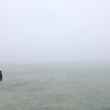














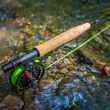
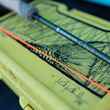



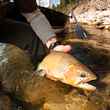
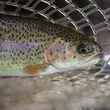

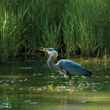
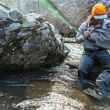
Comments
John Btkivh replied on Permalink
Very helpful and informative.
Thank you very much.
Fred Rickson replied on Permalink
One very effective way to fish an unweighted, marabou leech in stillwater is to find feeding fish and just let the fly flutter on its own towards the bottom. I’d does the wiggle for you.
Pages